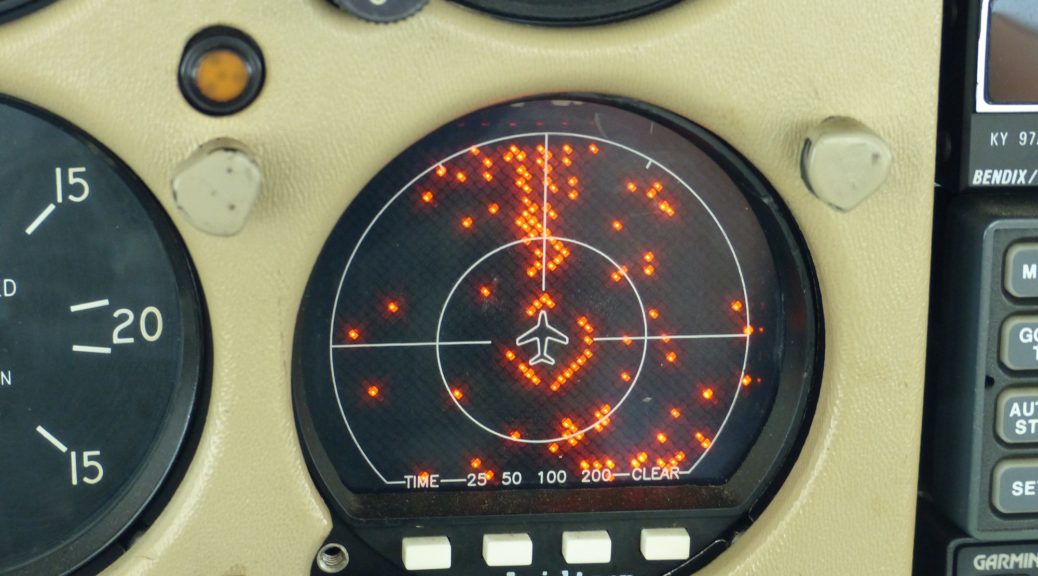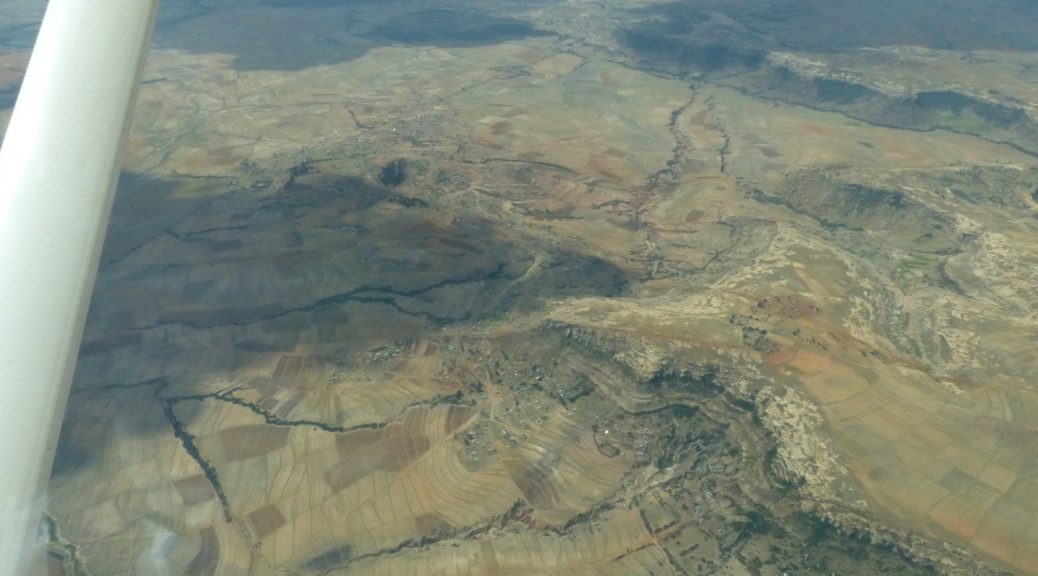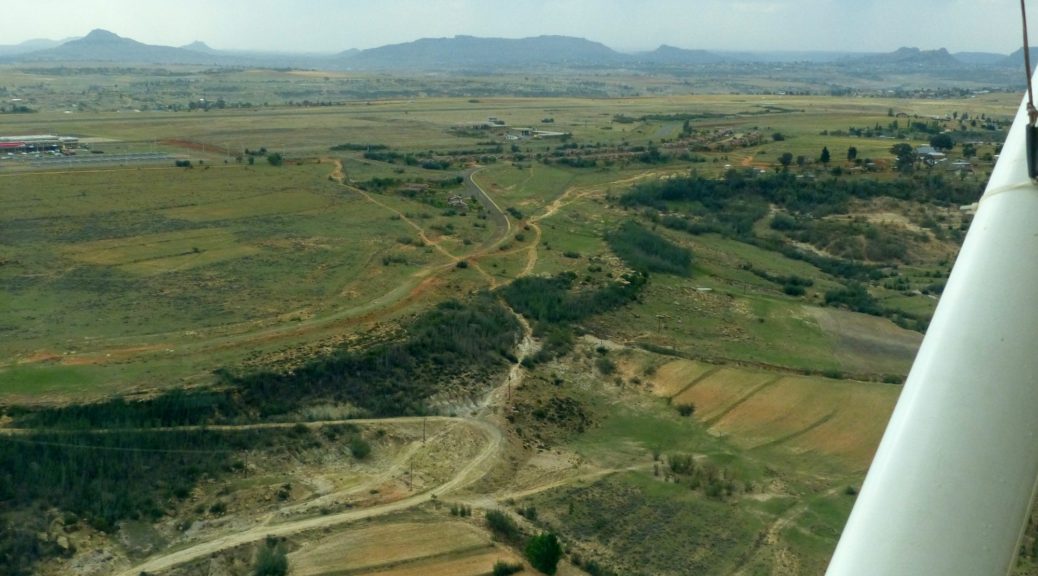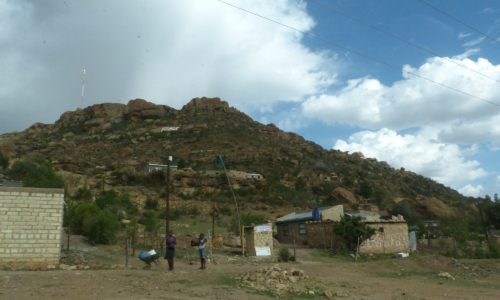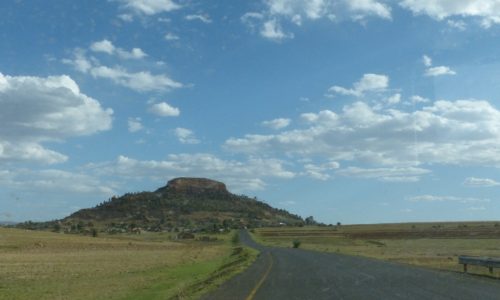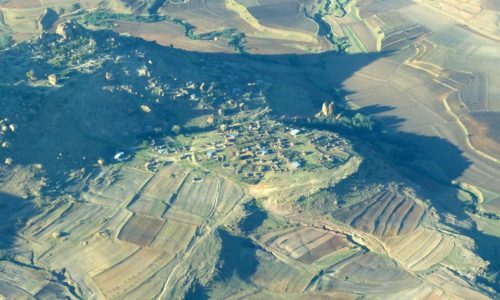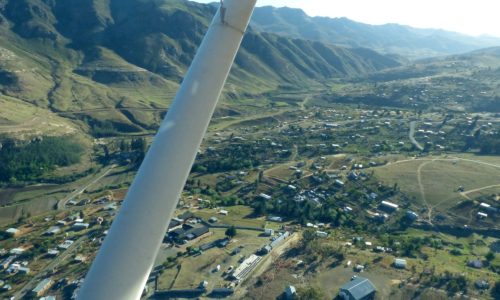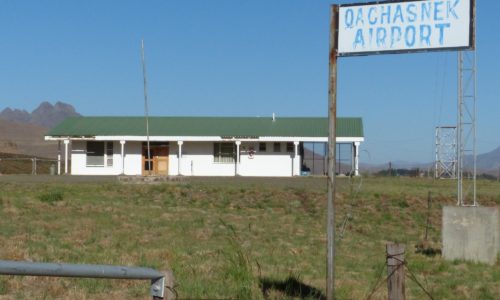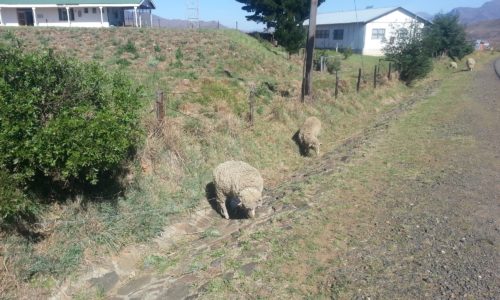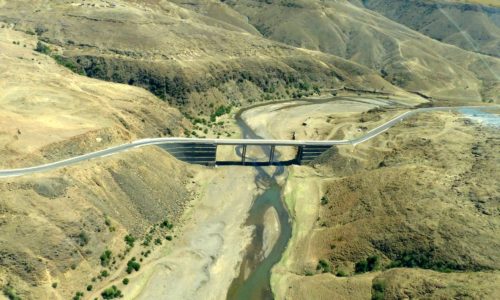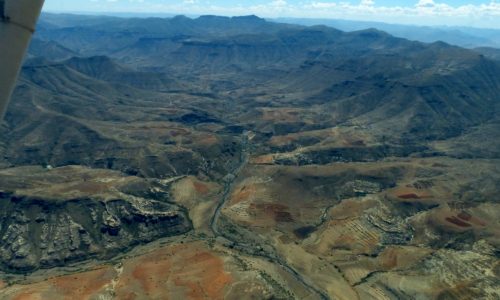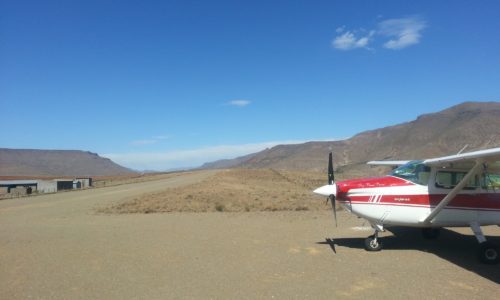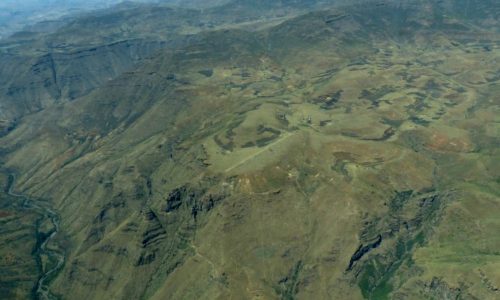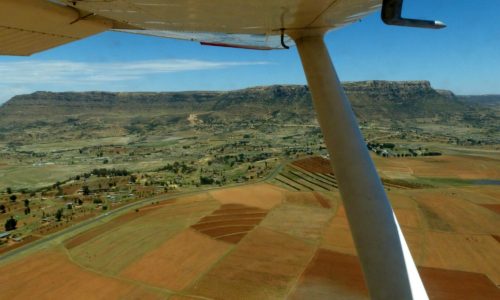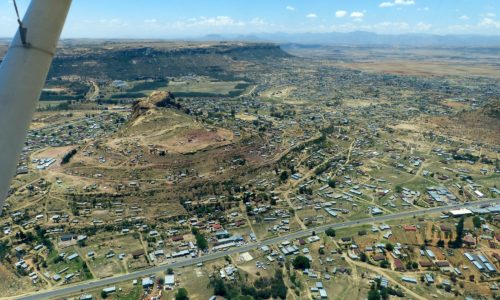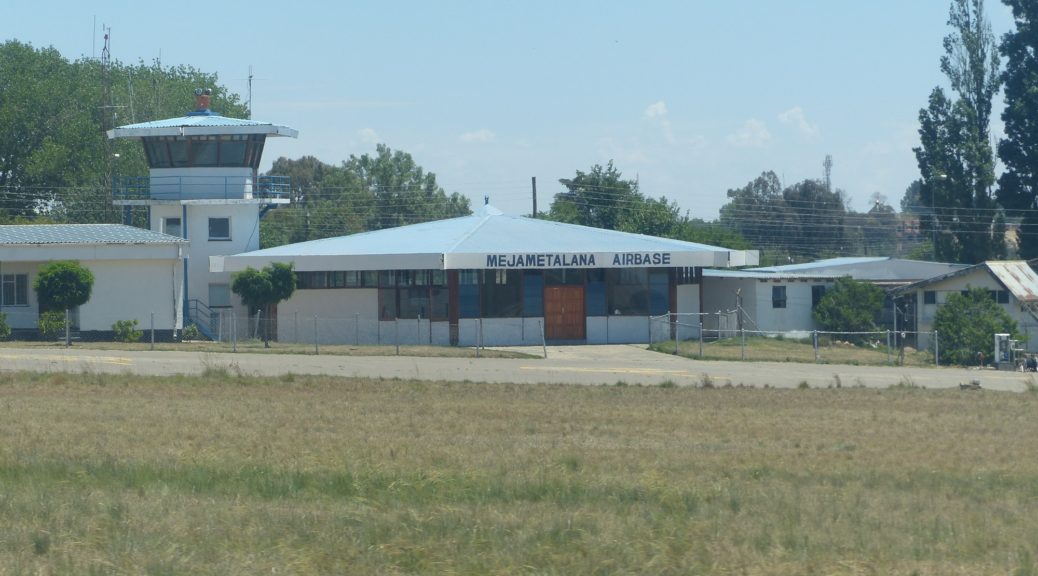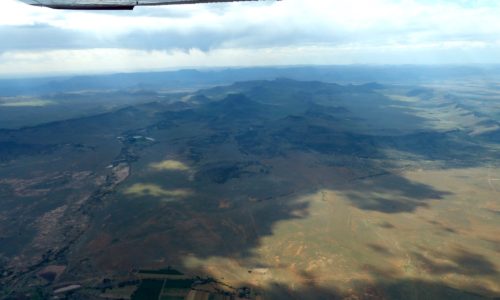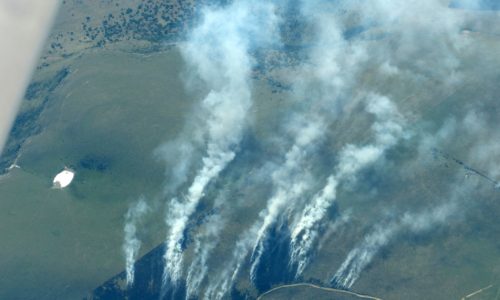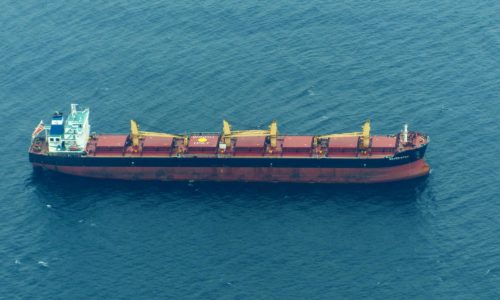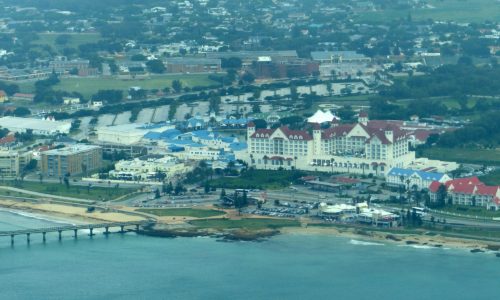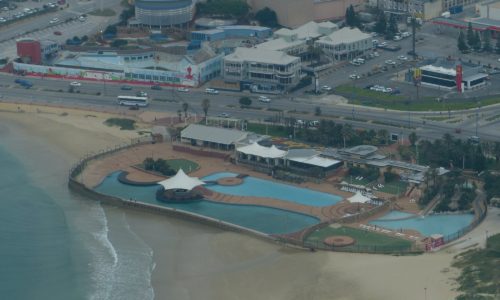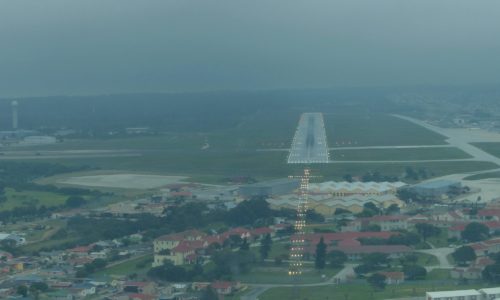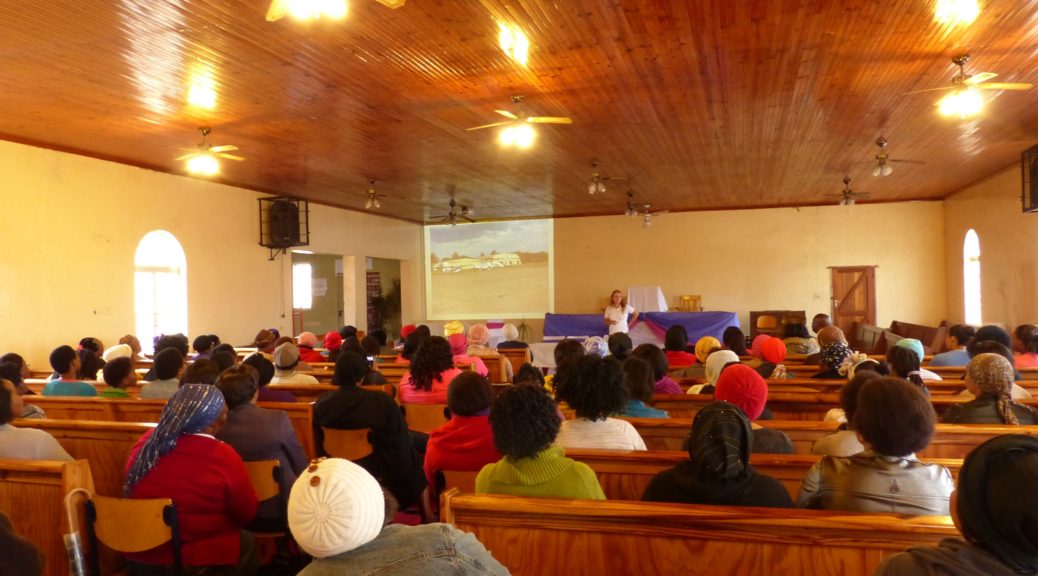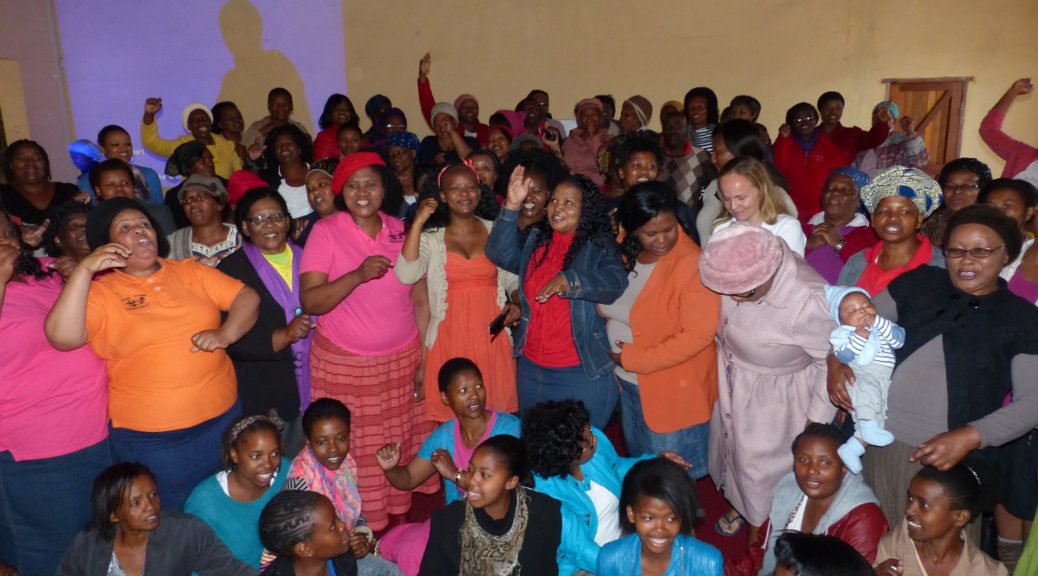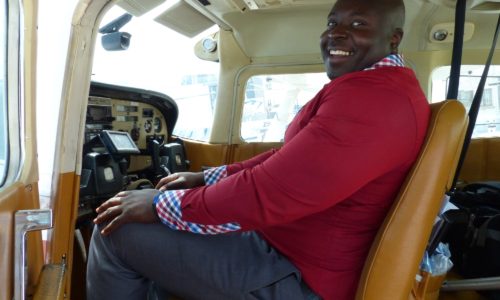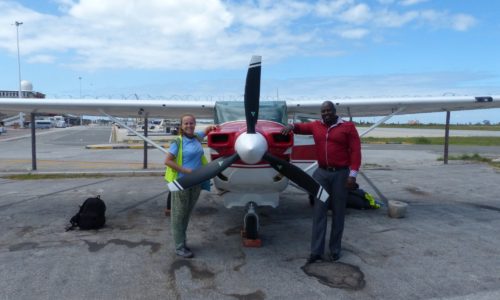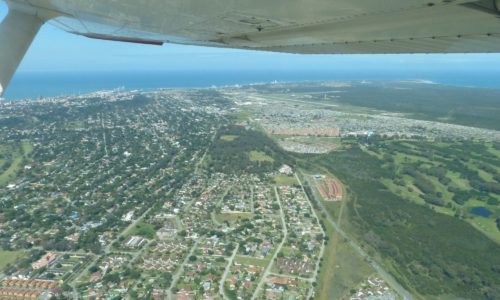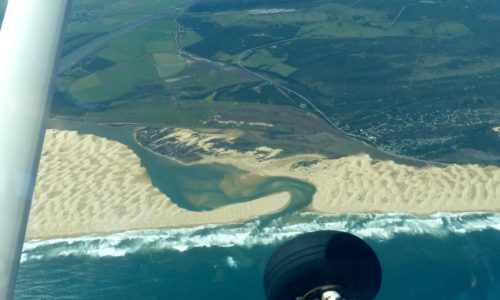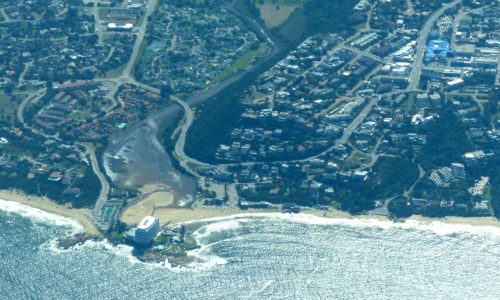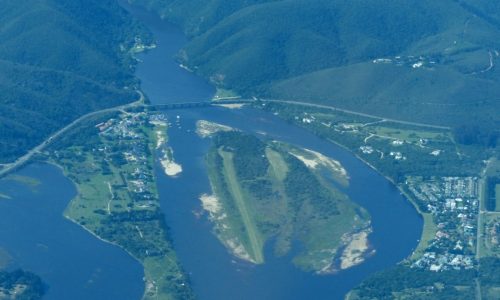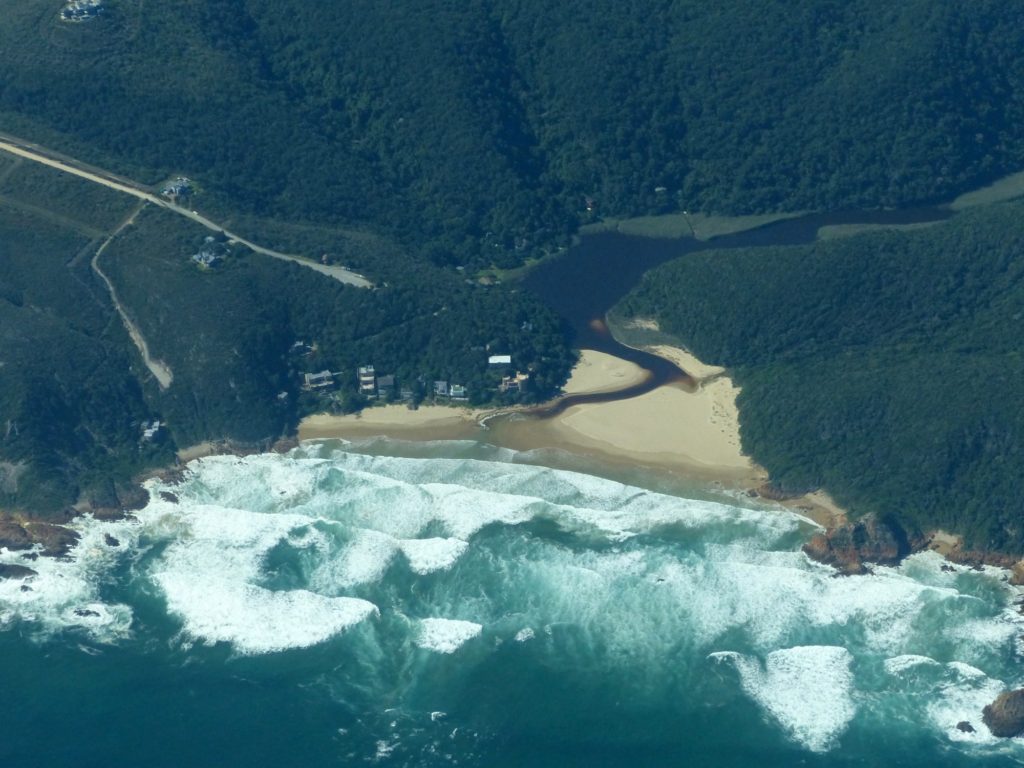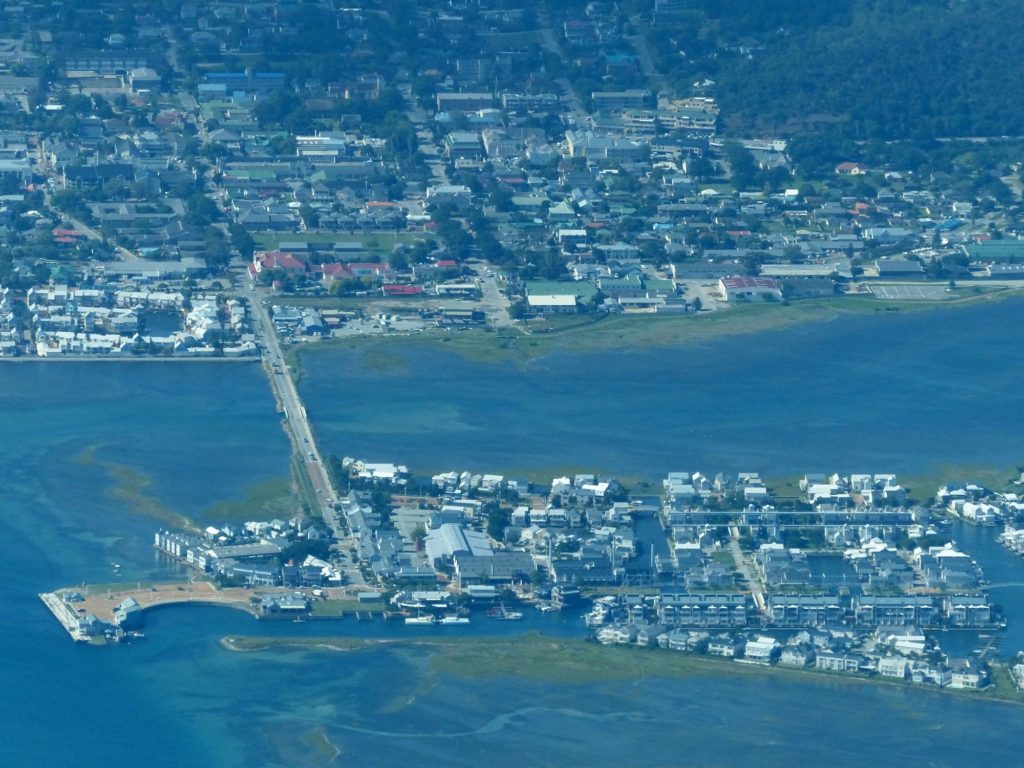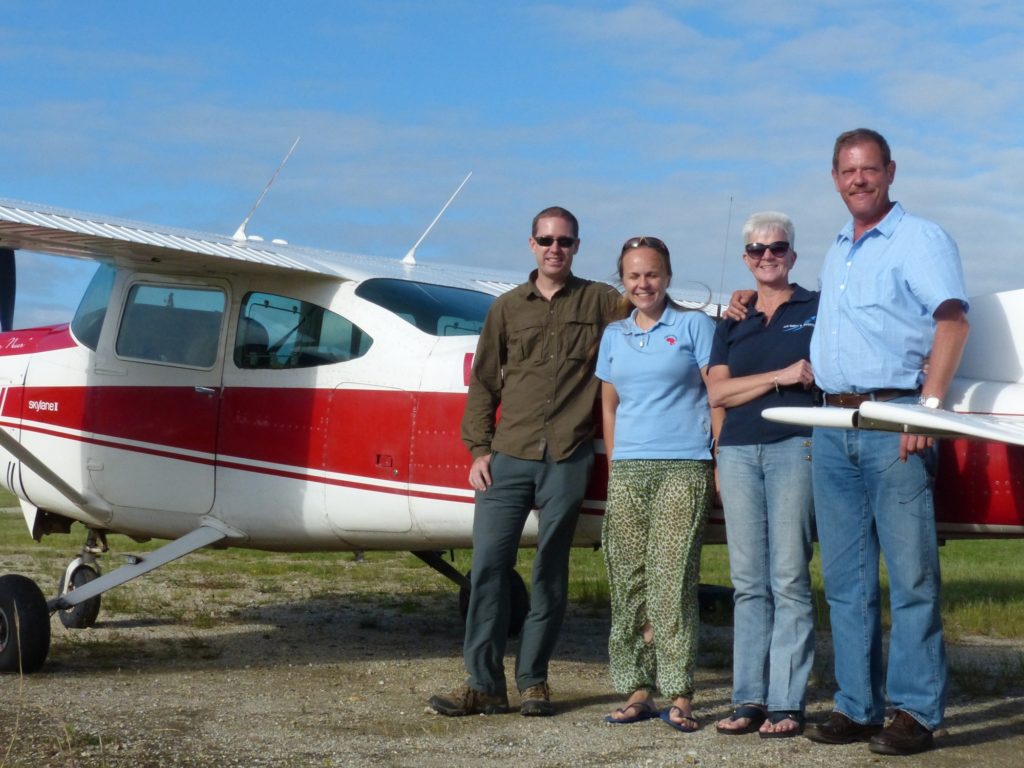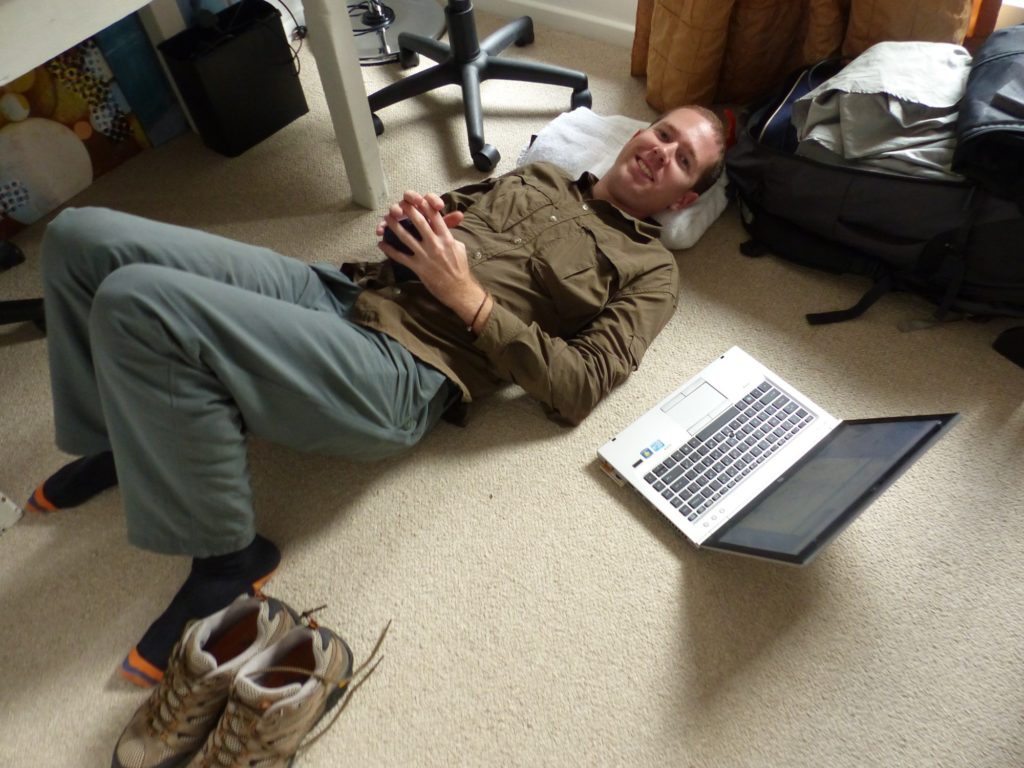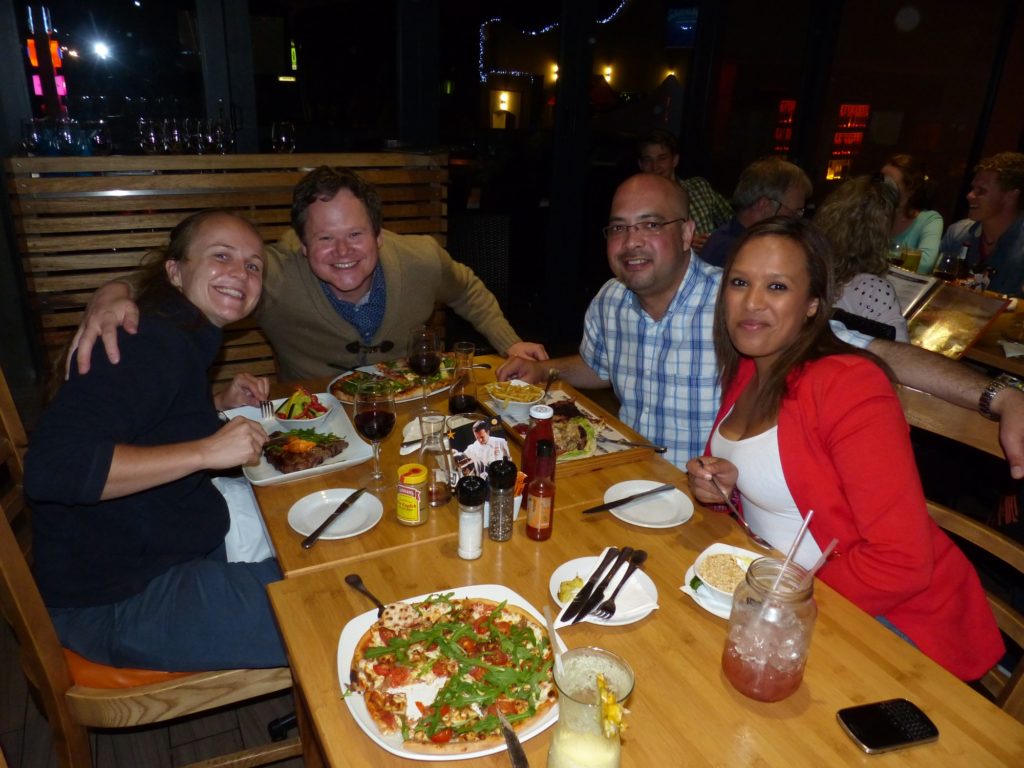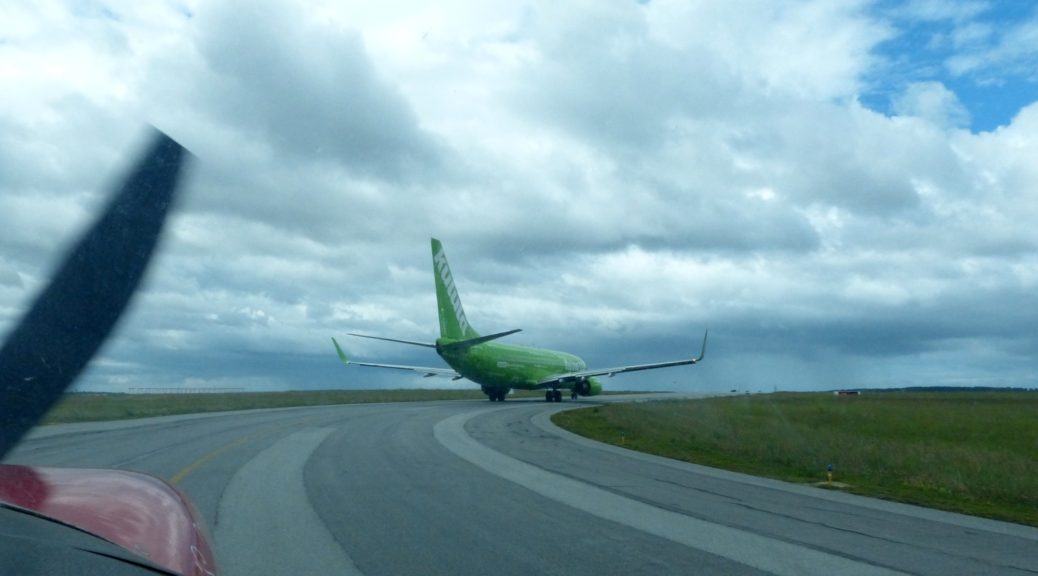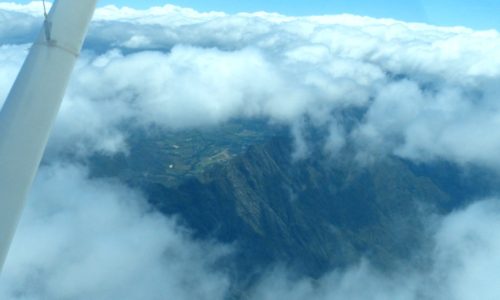Africa – Lesotho and South Africa
While Sophia went to the offices of our hosts for one last visit, I made my way to the airport and returned the rental car. I also prepared everything for departure, so we could get away as quickly as possible. Matsapha airport was easy to negotiate and it did not take long to fuel, flight plan, and pay; around mid-day we were on our way.
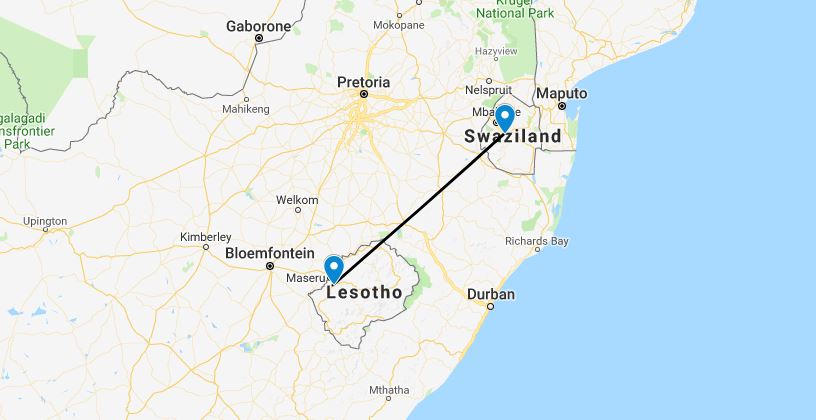
An initial strong tailwind shifted 180 degrees and became a strong headwind for most of the flight. We climbed to 10,500ft to ensure good clearance from all the terrain; Swaziland is somewhat mountainous, and Lesotho extremely so! There was a fair amount of thunderstorm activity around but visibility was good, and despite the storm-scope being almost completely illuminated with lightning strikes we were able to pick our way through the storms while keeping them at a safe distance, always having a diversion airport nearby in case we needed to get on the ground.
Coming into Lesotho we were directed to land on runway 29; this is a 3,000ft crosswind runway, subordinate to the main 10,000+ft runway. There was a 15 knot breeze blowing directly across the main runway, so despite the 5,000ft+ elevation we were down and stopped within about 500ft; CC’s teaching was already showing dividends! Communications with our hosts in Lesotho had been poor so we were not sure if we were being collected. A van from their centre was parked outside but there was no-one in it; a close inspection, however, revealed a sign on the front seat with “Sophia Webster” written on it. It was lucky we’d looked closely as we had been about to get a bus into town! We eventually located the driver and he took us to our room in the Tribute Guest House; Sophia went shopping and returned with a barbecued chicken and other goodies, which served us well for dinner.
Our hosts had only been able to find one night of accommodation for us, due to a large motorbike event going on in Lesotho. Sophia had not shared this little fact with me before we arrived! I spent the morning in the lobby of our first guest house, working, until Sophia and the driver returned at about noon. The medical crew had decided that it would be good to fly to some remote villages the next day before departing for Port Elizabeth, and so I accompanied them to the Flying Doctor Service at the military airport to talk to their pilots and find out more information about the proposed destination.
The first choice of strip was quickly abandoned. It was at 7,000ft elevation, 1,500ft long, with a dirt surface and a challenging location. I had no interest in visiting such a strip without having properly put the aircraft through all the test flight process advocated by CC, and practicing mountain flying rather more. We settled on two alternate strips, both more than 1,000ft lower and significantly longer. I gathered all available information, stopped in at the CAA to secure the required permits, and was then taken by the driver to our newly located guest house for the second night where I spent the afternoon writing and reading. A lack of an internet connection limited productivity in the field of work!
We were up before day-break in order to make the most of the cooler temperatures and calmer winds in the morning. The Flying Doctor Service used the same tactics to good effect. We arrived at the airport around 6am and were not entirely un-surprised to find that the airport staff, who had promised to be present, were nowhere to be seen. Unlike many of the airports that we had been to, the security at this one was fairly tight and we could find no holes in the fence or similar to crawl through and be on our way, so we waited and eventually made it to the aircraft a little later than expected.
We set off for our first destination, Qacha’s Nek, with the Secretary general of the nurses association in the back seat. He would be accompanying Sophia to the clinics, while I remained with the aircraft on the unsecured strips that we were going to visit. Qach’s Nek was located on the south-eastern border of Lesotho, clear across the country from the capital where we were based. The mountain peaks along the way topped out around 9,000ft so we had a long climb to 11,000ft cruising altitude as we headed into the interior. We heard medical service C206s on the radio headed out to strips much like the ones we were on our way to. There was a brisk breeze already blowing from directly behind us, so the we were only in the air for forty minutes before approaching our destination for a fly-by of the strip and inspection of its condition.
Qacha’s Nek was a paved strip, with a fairly steep slope. Despite a slight tailwind, I elected to land uphill and used only around half of the 2,500ft strip. Ground speeds were made even quicker by the 6,100ft elevation, but the slope really helped with slowing down. I spent a pleasant hour with the aircraft in the cool morning sun, sorting through to find anything that could be thrown away. Might as well use the time productively. Aircraft tidied, I sat back in the sun and watched the sheep until the others returned from their first clinic visit ready to move on to Nkau.
We shot down the runway, feeling a little like we were departing from a ski slope, and stayed at relatively low level along the valley for the short flight to Nkau. The winds were higher by this time, and blowing almost directly across the 2200ft dirt strip, but once again we used less than half the runway with judicious application of the skills practiced in Barberton. It was breezy enough that we made sure to tie the aircraft down as soon as we stopped to ensure it stayed in place, and the doctors headed off on foot to the clinic a mile away across the valley. I walked the length of the strip, as I had done in Qacha’s Nek, to take a look at the surroundings and pass the time.
The doctors arrived back with a cooler of samples to be flown back to the capital for analysis; any small aircraft visiting the strips was generally assumed to be from the Flying Doctors! Medical visit completed, we rolled out down the strip and set off on the trip back to Maseru international to drop off our passenger, refuel, and depart for Port Elizabeth. The wind was against us, and the temperatures higher, so it took quite some time and creative use of updrafts to reach a safe altitude and head back over the mountains. Along the way we passed overhead Matekane airstrip, perched on the edge of a dramatic cliff and in recent years made famous in all kinds of online “World’s most dramatic airport” articles. Descent and landing back at Maseru were uneventful.
Maseru was where we hit problems. Requesting fuel over the radio as we taxied in, we were met with the news that “No, no fuel here since 1997!”. One would have thought that this might be enough time to update the published airport data to note this important fact, but apparently not. There was a private operator on the field with jet fuel who usually sold to visitors, but the two women in the office would not even talk to us because the boss was not present; no luck there then. We spoke to the Flying Doctors who suggested that we fly the few minutes to the air force base in the middle of town and buy some fuel there; we took their advice to arrange permission for the visit through the tower controller at the international airport.
The flight to the air base took around seven minutes and we were cleared straight in to land. It was not a terribly big place and we very quickly found the jet fuel pump and shut down. We were greeted by Flying Doctors personnel who were very happy to see us, and military personnel who claimed that we had no clearance and wanted to know what we were dong. With a little help from the Flying Doctors we mollified the air force, and persuaded them to check with their tower controller. The next hurdle was that the air force claimed they could not sell fuel, and only the Flying Doctors could; the Doctors only had AVGAS. As with many things in Africa, a few minutes discussion and the presence of cash in hand (to pay for fuel, not for bribes!) smoothed our progress and we loaded up all the Jet-A we needed for our departure. The Flying Doctors treated us to a quick lunch and we were on our way.
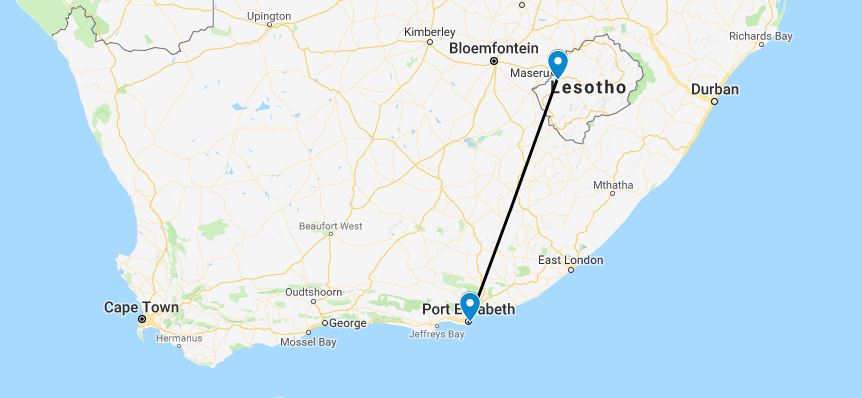
We had arranged with immigration at the international airport for our passports to be stamped before we left there, so we could depart directly from the air base. We could therefore fly directly to Port Elizabeth, an expected three hour journey. There were scattered thunder clouds along the route, but with the good visibility it was very easy to avoid them. As we approached Port Elizabeth the cloud started to close in, so I elected to fly the ILS approach into PE. There was a strong wind, but straight down the runway, and we were soon parked on the international apron and headed in to pass through customs and immigration.
Sophia stayed with the bags while I went with a ground handler to pay the fees; the only place that we had paid fees in advance. The money was taken by the fire service for some reason; this done I was returned to the aircraft so that I could taxi up to the GA area. Strangely there were no tie-down rings, only the buckets of concrete that are so often found for light aircraft tie downs. For some reason, people seem to think that weights that they can easily carry around (and could comfortably go flying with them in the plane) magically become effective tie downs once secured to the wings with a bit of rope. I parked with the tail into the wind and tied the tail to the fence and a cluster of several concrete buckets, figuring that as long as the wind couldn’t get under the rear of the aircraft and lift it up we’d be in a decent position.
A few minutes after I made it back to the terminal Sophia’s friend, Dr Mabenge, arrived to collect us. He took us straight to our bed-and-breakfast accommodation which was one of the best places we’d stayed so far, although a little far out of the city. After such a long day we relaxed with take-away pizza and planned our few days in PE!
Sophia spent the next day out and about with Dr Mabenge. I stayed behind in the accommodation to catch up with work as well as go out and explore a little, visiting some shops nearby. That evening we set out by taxi to go to the movies, something we hadn’t done since the trip began! First, a quick stop at the airport to further secure the aircraft as severe weather was predicted to arrive; it was already getting extremely windy and rainy. We located more concrete buckets (every little helps, I suppose) and also had Shell fill the tanks completely which probably made a much bigger difference. By the time we had finished it was fairly late and we made the decision to simply return home. We were both tired, and could go out the next evening instead!

The bad weather that had rolled in overnight continued. Nothing was planned on the medical front, so Sophia and I spent the next day in our accommodation catching up on work and planning for the last few days of the trip. We did manage, finally, to get out in the evening for dinner and a film; it felt very strange indeed to be wandering around a mall with familiar restaurants and shops after so long!
We started early on Sunday, as Dr Mabenge had invited Sophia to talk to his church. There was a service exclusively for women, and the project seemed to be a good subject to talk about. I operated the camera, as usual. Sophia’s presentation was becoming extremely polished by now and was very well received. Much to our surprise, at the conclusion of the presentation one of the ladies watching stood up and started to sing, followed quickly by the entire rest of the audience. They filed to the front of the church and gathered around Sophia, dancing and singing the whole time. Sophia was thoroughly taken aback but wore a huge grin throughout!
That afternoon Dr Mabenge dropped us off at a shopping mall for lunch, and to start easing ourselves back into the real world! It was obvious that we were still in ‘trip’ mode as we soon found ourselves in the outdoor store, browsing the survival section.
Dr Mabenge dropped us back at the airport and came to see the aircraft. The weather was excellent for our penultimate flight to George, on the southern coast of South Africa. The route took us along the coast, and we spent much of the flight looking out for whales with no success.

We landed at George after barely an hour and a half, and were met by a small crowd. Sophia’s doctor friend Marinus, who would be hosting us, was there along with experienced aviator Sharon Malcolm who had previously helped us out with advice in Cameroon, and now was meeting us at her home base to help us with parking and local procedures. Finally, we were met by a reporter from the local news who was planning a story to cover the project.
That evening we went out for dinner with Marinus and a few of his friends from the city, also in the medical field. The next day Sophia’s father would arrive from Cape Town to join us on the final flight into Cape Town International.
With no internet at Marinus’ house, I settled down in a local restaurant to work for the morning while he and Sophia ran one final training session for the trip. They joined me around lunch time, together with Sophia’s father who had just arrived from Cape Town. We spent a little time enjoying a meal and making final plans for the next day before heading to the nearby golf club where Sophia was to give her presentation to the Rotary Club. Interest was high, and after the 20 minute presentation and a long question and answer session we retired to the bar for further chat about medicine and flying. We returned to Marinus’ house reasonably early; we had a big day ahead of us!

Conditions for the flight to Cape Town looked decent, with some cloud cover along the route but well above instrument flight minima. The three of us said our goodbyes, and climbed aboard. A strong headwind would make the flight slower than usual, but by now we didn’t mind taking our time. George air traffic control was not particularly competent; or at least, very timid. We had to wait for several minutes because a single 737 was being pushed back on the (enormous) apron, and despite our taxi route not taking us within a couple of hundred meters of it, ATC wouldn’t let us in until it had moved off. Finally we were cleared for takeoff and on our way.
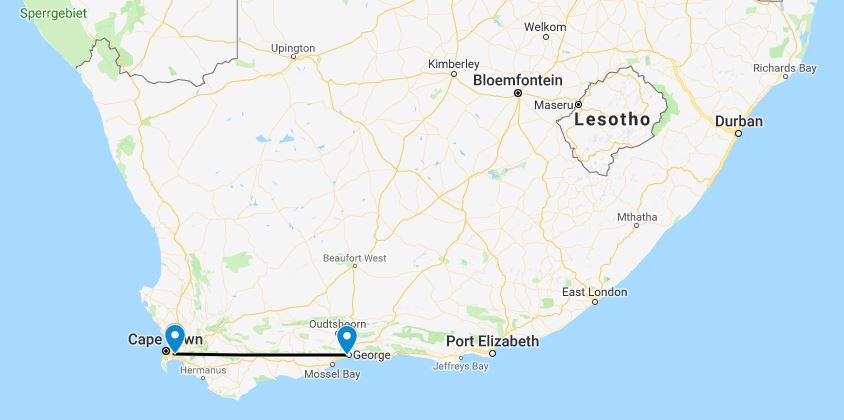
We flew IFR, and before long were passed to Cape Town approach. The wind over the mountains was causing strong up and down drafts and the 182 did not have the power to completely oppose them. Despite variations of only a few hundred feet from our assigned altitude, and our explanation of the issue, approach was constantly on our case about not being spot on our assigned level. We were vectored onto a downwind leg, still in the clouds, and turned onto the ILS approach. Minutes later we were on the ground, mission completed!
We parked up at Cape Town flying club, and were met by Sophia’s mother and some of her friends. After a bit of a rest we set off once again on a short flight to Stellenbosch, where the aircraft was to be left; we emptied and cleaned it, and said our goodbyes. Part of us was sad to leave it after so long – the other part of us happy to see the back of it with the electrical issues and the difficult owner!

The Websters dropped me at the international airport and I collected my hire care for the planned week’s holiday around Cape Town. It seemed silly to come all this way and not spend a little time to see the city, as well as relax a bit; after the journey we had just had, we were both extremely worn down. Sophia helped me move my luggage into the hire car and that was it; we parted ways for the first real time in almost four months! It was not to be for long though; the “Welcome to Cape Town” barbecue was just a few days away!
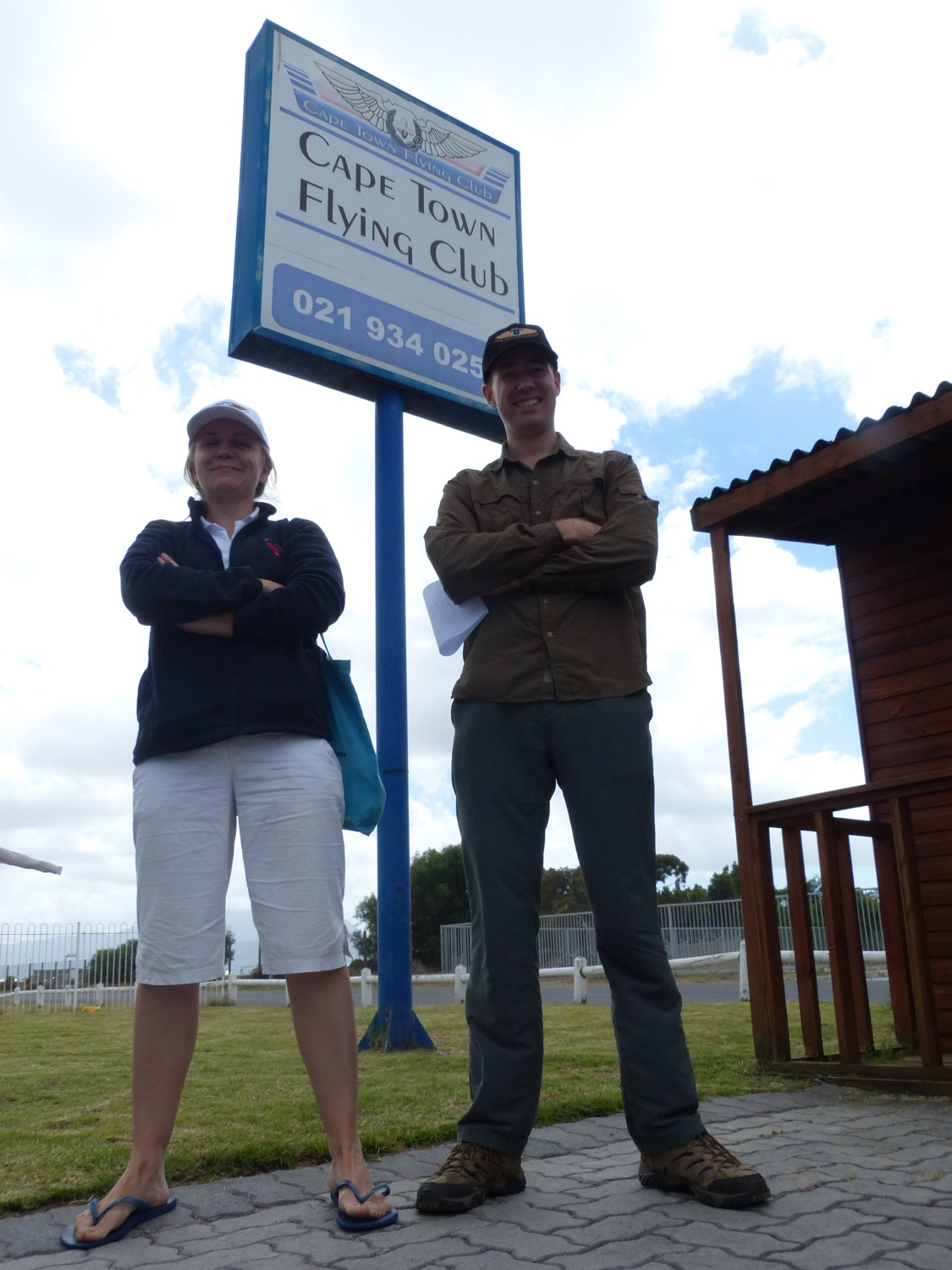
Click here to return to the Adventures index.




